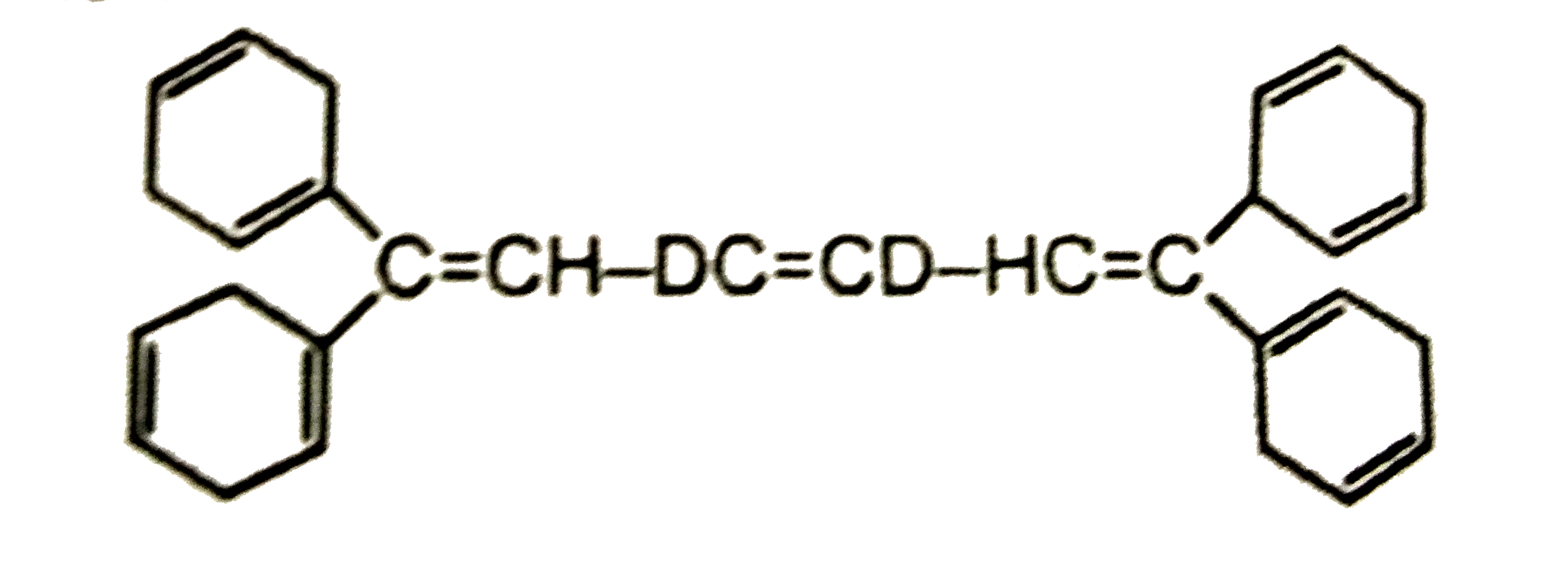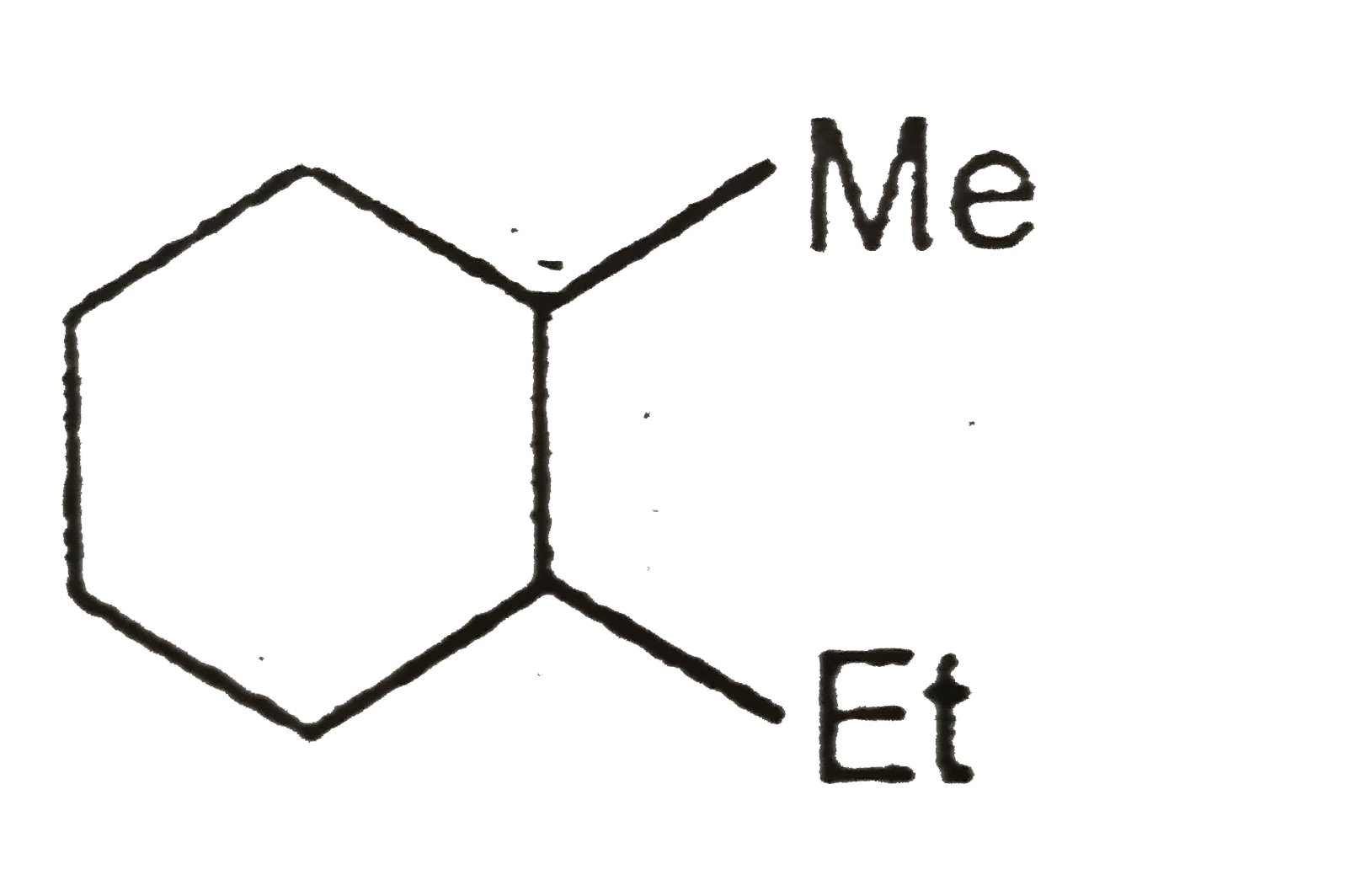For the given complex [CoCl2(en)(NH3)2]+, the number of geometrical isomers, the number of optical isomers and total number of isomers of all type possible respectively are
3,2 and 4
2,2 and 3
2,0 and 2
0,2 and 2
The correct Answer is:A
To determine the number of geometrical isomers, optical isomers, and the total number of isomers for the complex (CoCl2(en)(NH3)2)+, we will follow these steps:
Step 1: Identify the Coordination Number and Geometry
The complex (CoCl2(en)(NH3)2)+ has a cobalt (Co) center coordinated to two chloride ions (Cl), one ethylene diamine (en), and two ammonia (NH₃) ligands. The coordination number of cobalt in this complex is 6, which typically leads to an octahedral geometry.
Hint: The coordination number is the total number of ligand donor atoms bonded to the central metal atom.
Step 2: Determine the Types of Ligands
In this complex:
- Chloride (Cl) is a monodentate ligand.
- Ethylene diamine (en) is a bidentate ligand, meaning it can attach through two donor atoms (both nitrogen atoms).
- Ammonia (NH₃) is also a monodentate ligand.
Hint: Identify the nature of each ligand (monodentate vs. bidentate) to understand how they can arrange around the central atom.
Step 3: Identify Geometrical Isomers
For octahedral complexes with two identical ligands (Cl) and two different types of ligands (en and NH₃), we can have geometrical isomers. The possible arrangements are:
- Cis Isomer: The two Cl ligands are adjacent to each other.
- Trans Isomer: The two Cl ligands are opposite each other.
Thus, we can have:
1. Cis Isomer: Cl, Cl adjacent to each other.
2. Trans Isomer: Cl, Cl opposite each other.
Total Geometrical Isomers = 2
Hint: Consider the positions of identical ligands in relation to each other to determine cis and trans forms.
Step 4: Identify Optical Isomers
Optical isomers (enantiomers) occur when a molecule lacks a plane of symmetry. In this case, both the cis and trans forms can be analyzed for optical activity:
- The Cis Isomer can have optical isomers because it lacks a plane of symmetry.
- The Trans Isomer has a plane of symmetry and does not have optical isomers.
Thus, for the cis isomer, we have 2 optical isomers (enantiomers), and for the trans isomer, we have none.
Total Optical Isomers = 2
Hint: Check for the presence of a plane of symmetry to determine if optical isomers exist.
Step 5: Calculate Total Isomers
Now, we can calculate the total number of isomers:
- Geometrical Isomers = 2
- Optical Isomers = 2 (only from the cis form)
Total Isomers = Geometrical Isomers + Optical Isomers = 2 + 2 = 4.
Total Isomers = 4
Final Answer
The number of geometrical isomers, the number of optical isomers, and the total number of isomers of all types possible for the complex (CoCl2(en)(NH3)2)+ are:
- Geometrical Isomers: 2
- Optical Isomers: 2
- Total Isomers: 4
The complex (CoCl2(en)(NH3)2)+ has a cobalt (Co) center coordinated to two chloride ions (Cl), one ethylene diamine (en), and two ammonia (NH₃) ligands. The coordination number of cobalt in this complex is 6, which typically leads to an octahedral geometry.
In this complex:
- Chloride (Cl) is a monodentate ligand.
- Ethylene diamine (en) is a bidentate ligand, meaning it can attach through two donor atoms (both nitrogen atoms).
- Ammonia (NH₃) is also a monodentate ligand.
For octahedral complexes with two identical ligands (Cl) and two different types of ligands (en and NH₃), we can have geometrical isomers. The possible arrangements are:
- Cis Isomer: The two Cl ligands are adjacent to each other.
- Trans Isomer: The two Cl ligands are opposite each other.
1. Cis Isomer: Cl, Cl adjacent to each other.
2. Trans Isomer: Cl, Cl opposite each other.
Optical isomers (enantiomers) occur when a molecule lacks a plane of symmetry. In this case, both the cis and trans forms can be analyzed for optical activity:
- The Cis Isomer can have optical isomers because it lacks a plane of symmetry.
- The Trans Isomer has a plane of symmetry and does not have optical isomers.
Now, we can calculate the total number of isomers:
- Geometrical Isomers = 2
- Optical Isomers = 2 (only from the cis form)
The number of geometrical isomers, the number of optical isomers, and the total number of isomers of all types possible for the complex (CoCl2(en)(NH3)2)+ are:
- Geometrical Isomers: 2
- Optical Isomers: 2
- Total Isomers: 4
Topper's Solved these Questions
- COORDINATION CHEMISTRYBOOK - ERRORLESS CHAPTER - COORDINATION CHEMISTRYEXERCISE - ORDINARY THINKING Objective Questions (HYBRIDISATION AND GEOMETRY)
53 Videos
- COORDINATION CHEMISTRYBOOK - ERRORLESS CHAPTER - COORDINATION CHEMISTRYEXERCISE - ORDINARY THINKING Objective Questions (COMPLEXES AND COMPLEX STABILITY)
17 Videos
- COORDINATION CHEMISTRYBOOK - ERRORLESS CHAPTER - COORDINATION CHEMISTRYEXERCISE - ORDINARY THINKING Objective Questions (Nomenclature, Oxidation state and EAN number)
58 Videos
- CLASSIFICATION OF ELEMENTS AND PERIODIC PROPERTIES BOOK - ERRORLESS CHAPTER - CLASSIFICATION OF ELEMENTS AND PERIODIC PROPERTIES EXERCISE - JEE Section Matrix Match type questions
2 Videos
- D & P-BLOCK ELEMENTSBOOK - ERRORLESS CHAPTER - D & P-BLOCK ELEMENTSEXERCISE - JEE Section (Numeric answer type questions)
2 Videos
Similar Questions
Knowledge Check
For the given complex [CoCl2(en)(N3)2]+, the number of geometrical iosmers, the number of optical isomers and total number of isomers of all type possible respectively are
A2,2,&4B2,2&3C2,0&2D0,2&2The number of geometrical isomers for [Pt(NH3)2Cl2] is
A(a) TwoB(b) OneC(c) ThreeD(d) FourThe number of geometrical isomers and optical isomers of [Pt(NH3)(Br)(Cl)(Py)] are respectively.
A2, 0B3, 2C3, 0D2, 2
Total number of geometrical isomers possible for

View SolutionTotal number of geometrical isomers in the given compound are

View SolutionTotal number of geometrical isomers in the given compound are :

View SolutionIsomerism| types of isomers|geometrical isomers|optical isomers
View SolutionThe number of geometrical isomers and optical isomers of [Pt(NH3)(Br)(Cl)(Py)] are respectively.
View Solution


